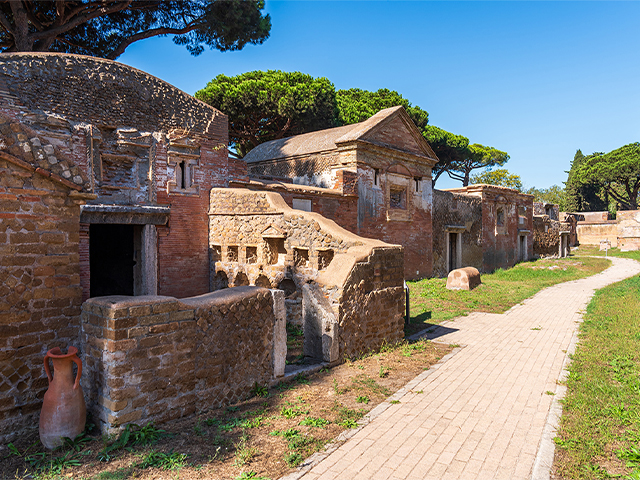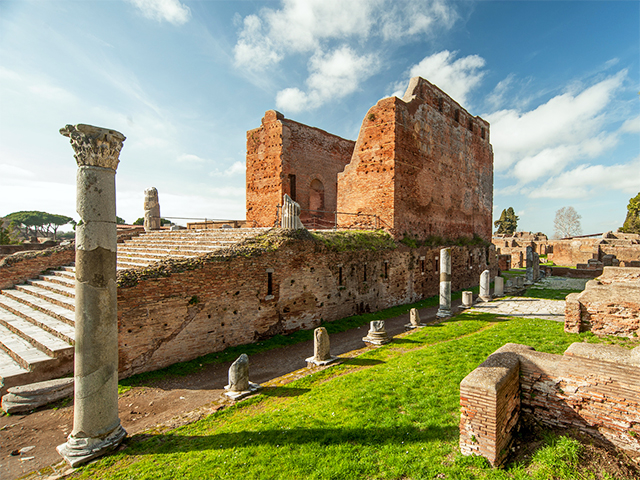Discovering the ancient city of Portus in Fiumicino
A trip into the history of the village of Episcopio di Porto in the archeological area of the Harbour of Trajan through the Oasis of Portus until the NecropolisLENGTH

6-8 hours
Difficulty

Medium
Budget

Medium
Route stops
- Episcopio or Castello di Porto in Fiumicino
Everything about the Episcopio di Porto in Fiumicino: history, location, how to get there and other useful information to visit the castle and the church of the village
- Oasis of Portus
The Oasis of Porto in Fiumicino: history, opening hours, prices and plenty of useful information about how to get there and what to see during your visit to the Harbour of Trajan.
- Visiting the Harbour of Trajan in Fiumicino
Discover the archeological area of the Harbour of Trajan in Fiumicino: history, guided visits, opening hours and useful information
- Isola Sacra Necropolis
History, opening hours and useful information about the Necropolis of Portus: an enchanting archaeological site a stone's throw away from Fiumicino airport.
Everything about the Episcopio di Porto in Fiumicino: history, location, how to get there and other useful information to visit the castle and the church of the village
The Oasis of Porto in Fiumicino: history, opening hours, prices and plenty of useful information about how to get there and what to see during your visit to the Harbour of Trajan.
Discover the archeological area of the Harbour of Trajan in Fiumicino: history, guided visits, opening hours and useful information
History, opening hours and useful information about the Necropolis of Portus: an enchanting archaeological site a stone's throw away from Fiumicino airport.
Here is a fascinating itinerary that will lead you to discover the ruins of the ancient city of Portus near Fiumicino and not far from the Leonardo da Vinci Fiumicino Airport.
Risen up around the ancient port docks of Claudio and Trajan, the ancient Portus played for many centuries an important strategic role for Rome, taking avantage of the closeness with the Tiber.
After the construction (112 AD) by emperor Trajan of a new harbor basin of hexagonal shape, more backward and protected than the previous harbour made by Claudius, Portus started a quick and constant development for the settlement.
The construction of the walls took place at the beginning of the 4th century in the Constantinian era and Portus maintained its invaluable function as commercial port of Rome and city-barn until the 9th century.
Only following the invasion of the Goths of Vitige in 537 AD, started a long period of decline that lead to the gradual abandonment of the inhabited center.
In the 16th century architects of the caliber of Pirro Ligorio, Baldassarre Peruzzi and Andrea Palladio began to study the ruins and in the 19th century started a systematic campaign of excavations thanks to which today we can admire the remains of this ancient settlement.
During your visit not only will you be able to come into contact with monuments and the ruins of the Roman era but you will also have the chance to spend a few hours of relaxation immersed in nature.
While you drive along Via Portuense, to get to the medieval village of Episcopio di Porto, the first stop of the itinerary, you'll see at your left side (if you come from Rome) the remains of the Temple of Portunes (also known as Portunus), ancient Roman divinity represented as a boy with a cerulean and bristly beard.
Tradition has it that the god was called upon before crossing the Tiber, which at that time presented many hidden dangers. Portunus was worshiped by everybody who made business along the river: a true god of rivers and harbours!
Further on, continuing along via Portuense, you'll finally get to the medieval village.
From the original complex have been preserved the crenellated city walls and the entrance gate with the coat of arms of Pope Sixtus IV, who in 1483, hosted by Bishop Rodrigo Borgia, commissioned some restoration works.
The village, bishop seat of Portus and Santa Rufina, on Medieval times, after the ancient city of Portus had been abbandoned, took on a defensive role in front of barbarian raids.

Episcopio di Porto - Fiumicino - Wikipedia CC BY-SA 4.0 - Pere Garcia
Through the entrance gate, built in 1771 by Cardinal Marcello Lante della Rovere with two marble columns coming from the nearby Necropolis of Portus, you can access the courtyard, the oldest part of the village.
The eighteenth-century courtyard is the work of the architects Gregorini and Passalacqua (authors of the Basilica of the Holy Cross in Jerusalem in Rome) and it houses the Church dedicated to Saint Hyppolitus and Lucy, where there are the relics of the patron saint of Fiumicino.
To learn more, read the article about Episcopio di Porto.
2. OASIS OF PORTUS
Opposite to the village is the access to the splendid Oasis of Portus, which extends around the whole harbour area.
The lake, with a perfect hexagonal shape and spread along 3 hectares, was used to supply Rome, to storage goods and for ships mantainance, taking advantage of the connection with the Tiber river.
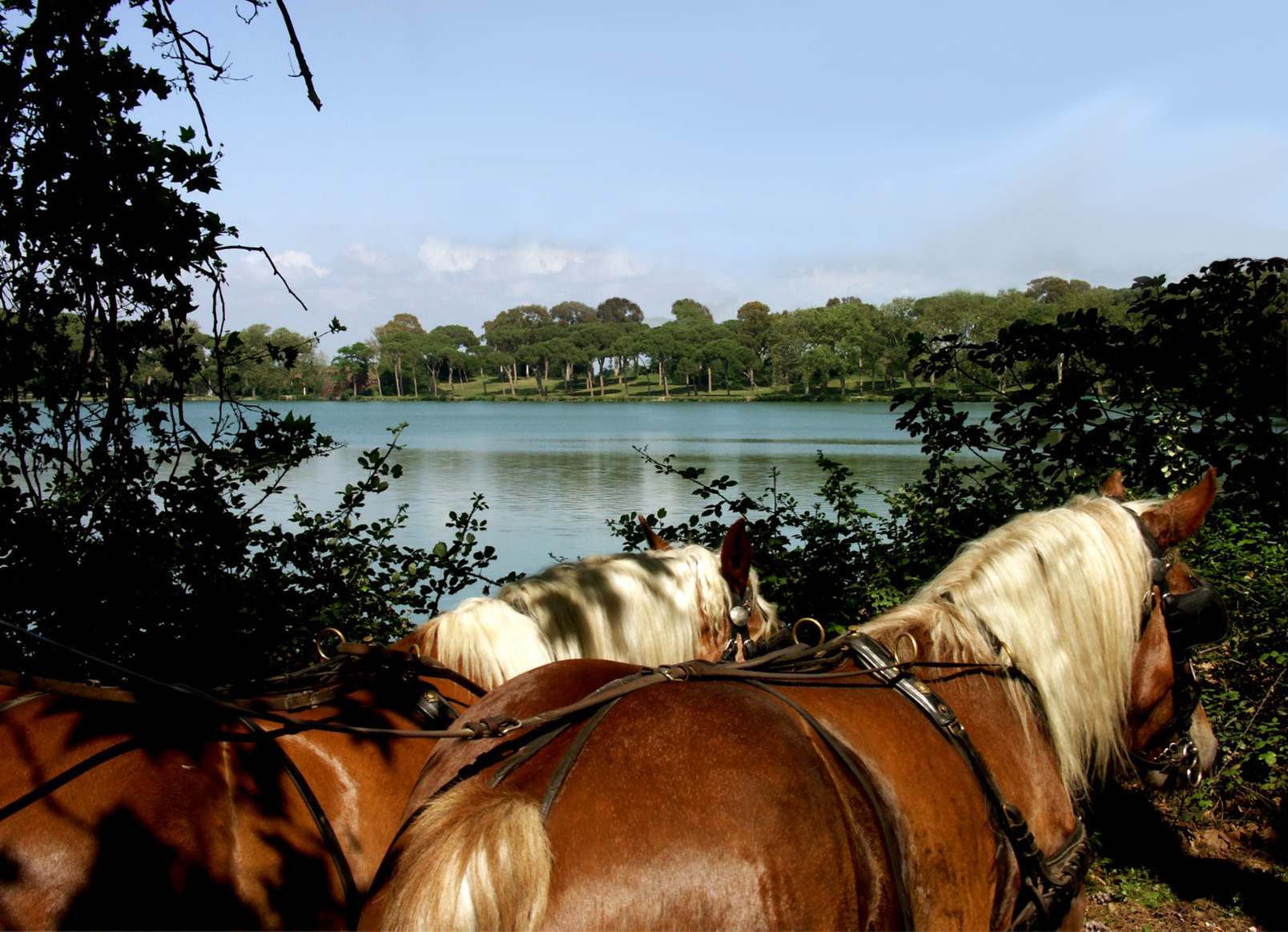
Oasis of Portus (Fiumicino)
The visit to the Oasis takes around 1 hour. In order not to play havoc with the animals and the environment, the visit is done riding a horse-car.
Moreover, during the whole route, you will be accompanied by very well-prepared guides from the Italian environmental organization Legambiente.
The visit is planned with two parts: in the first one, you will visit the lake with the House of Ducks, the so-called Butterfly Garden, where particular flowering bushes tend to bait different butterfly species, and a bar for a pleasant coffee break.
Riding the horse-car you will go through an area where, if you are lucky, you will catch sight of a small herd of deers.
Finally, in the second part you will get to a hut where, binoculars in hand, you will be able to practice a little bit of birdwatching with the birds in the lake and in the two adjoining basins.
The Oasis of Portus is really the perfect place for both adults and children: entertainment, culture and history blend perfectly together to offer an unforgettable hike out: a small paradise away from the city smog and chaos.
3. THE ARCHEOLOGICAL AREA OF THE HARBOUR OF TRAJAN
Leaving the route of the Oasis, you will easily find the Archeological Area of the Harbour of Trajan (to learn about opening hours and days click here).
But before getting to the ruins, to better understand the greatness of this place, we want to give you some information about its history.
The hexagon, commissioned by emperor Trajan was with no doubt a priceless engineering work. Think that it could hold up to 200 ships!
Behind the mooring points were the big warehouses preceded by a majestic portico. A lighthouse was on the right mole of the inflow channel to the harbor basin and to complete the complex, a colossal statue of Trajan and a large building, the Imperial Palace with the appended baths, a private theater and a small temple dedicated to Hercules.

Harbours of Claudius and Trajan in an old reconstruction
During a nice walk among these centuries-old trees you'll have the chance to experience the places where 2000 years ago sailors and merchants carried the goods that arrived from every corner of the Empire.
From the Portico of Claudius, with the famous ugly columns, you'll get to the Severiani Warehouses, passing through the Darsena, the ruins of the Imperial Palace and the Early Christian Basilica.

Harbour of Trajan - Portico of Claudius and the ugly columns
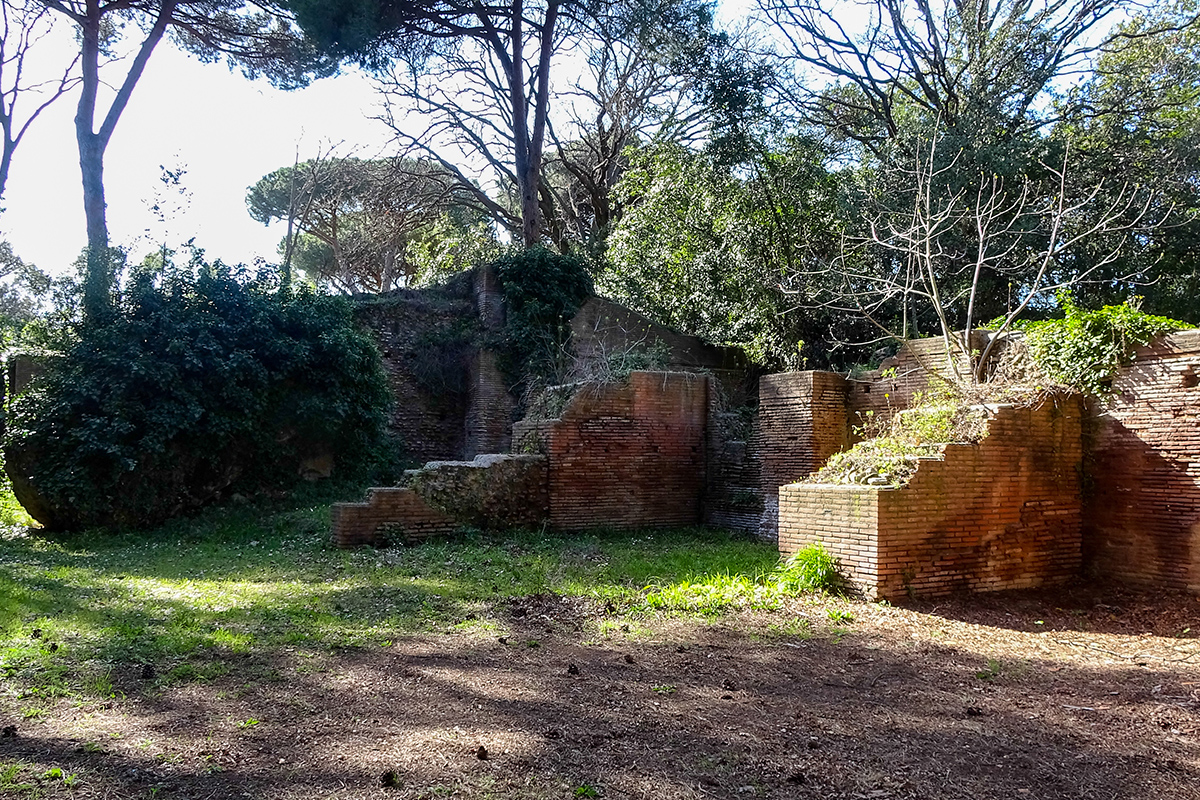
Harbour of Trajan - Severiani Warehouses
To learn more about the visiting itinerary read this article about the Archeological Area of the Harbour of Trajan.
4. NECROPOLIS OF PORTUS
At about 3 km away and less than 10 minutes by car, are the remains of the Necropolis of Portus, the last stop of this itinerary.
Discovered in 1925 after the land reclamation works in the area called Isola Sacra (Sacred Island), the necropolis has been amazingly well-preserved to present date!
A true city of the dead that offers an enchanting proof of the Romans relation to the after-life.
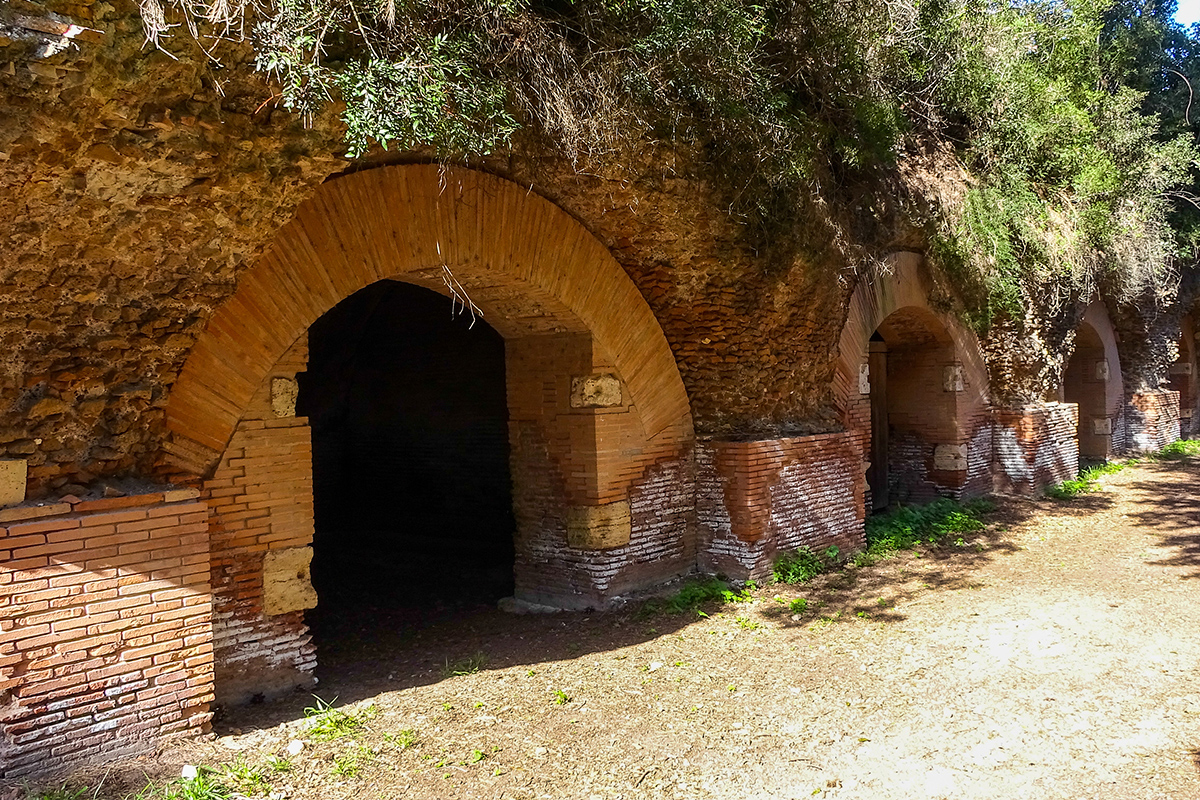
Necropolis of Portus
Extended for 400 meters, the necropolis of Portus counts with around 150 sepulchres. The buildings are grouped in small blocks, separated by green areas, small squares and crossing tiny streets. The most common burial homes are Familiar Tombs, big square rooms. It is also possible to find the so-called "poor" tombs, spread along the necropolis.
The tombs were used to reveal the status of the deceaded and their family within the society. That is why they face the road and are decorated with paintings, mosaics and inscriptions.
Well, we've got to the end of this itinerary.
For further details about opening times, prices and other useful information for your visit to the Necropolis of Portus, as well as about any of the other stops of the itinerary, we invite you to read the specific in-depth articles.
Enjoy your trip!



 PORT MOBILITY CIVITAVECCHIA
PORT MOBILITY CIVITAVECCHIA










